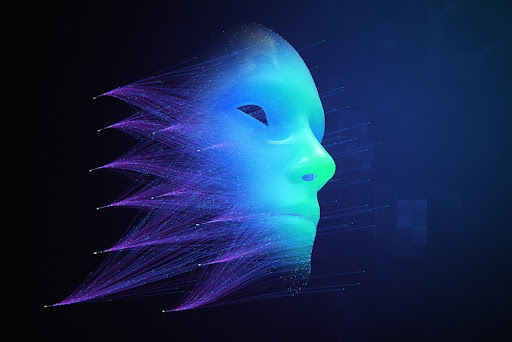How Deepfake Video Call is Reshaping Communication: A Glimpse into the Future

Deepfake technology enables fast advancements that convert our digital content interaction through artificial intelligence-generated convincing videos and images. This technology emerged through its use for fake celebrity videos to become the basis for creating deepfake video calls, which enable complete digital impersonations.
The creation of deepfake technology provides fresh opportunities for both commercial development and entertainment possibilities, alongside severe dangers involving fake news distributions and personal security concerns. Deepfake video calls will expand in usage, so we need to resolve security and ethical issues to protect communication standards moving forward.
Understanding Deepfake Video Call
Implementing AI-based technology in deepfake video calls generates synthetic video footage that presents absolute real-life accuracy. Machine learning algorithms enable this technology to study and create digital copies of faces and vocal expressions. The system receives extensive datasets of videos and images from which it learns to replicate facial motions together with vocal intonations and physical gestures. This technology helps create virtual appearances on video calls by either producing illusions of individuals who lack real presence or by modifying how people look on display. The immersive nature of video calls becomes enhanced through this technology, which also enables users to generate virtual avatars and replace their real-time face appearances.
The Impact of Deepfake Video Calls on Communication
Online communication patterns transform through the adoption of deepfake video call. These communication platforms enable users to display other identities through avatars or substitute their appearance with different persons. Deepfake video calls are useful for business operations because they enable both virtual presentations and artificial digital assistance features. Miscasting tools in entertainment provide actors with opportunities to deliver performances without traditional studio settings. The technology creates multiple serious problems. The technology enables users to deceive others while distributing fabricated material. The challenge of maintaining secure video calls continues to grow as people face problems with trusting their communication partners.
Deepfake Detection: The Need for Security
More advanced deepfake detection systems become vital because contemporary fake video calls are becoming increasingly sophisticated to detect. Deepfakes used during calls generate various serious issues when implemented. A person can pretend to have the position of boss or coworker by providing unrealistic directions to others. People become targets of scams when scammers employ deepfakes to obtain personal information. These calls can also spread fake news or confuse essential events. Without proper detection tools, it gets tough to know what is real. Trust in digital spaces starts to break down. That is why strong deepfake detection is key to keeping communication honest and secure.
Deepfake Detection Software: The Technology Behind the Defense
Deepfake detection software is designed to catch fake videos before they cause damage. It looks for small clues in the video, such as strange facial movements or lighting problems. AI can often spot these signs, which people might miss. The software scans the video frame by frame and flags anything that seems off. Some tools even check audio to see if the voice matches the face. Popular options include Microsoft’s Video Authenticator and tools from companies like Deepware and Sensity. These programs help spot deepfakes during video calls and protect against scams or misinformation.
Deepfake Detection Online: Protecting Users in Real-Time
Online platforms are starting to use deepfake detection tools to keep users safe during video calls. These tools work in real-time and scan for signs that a video might be fake. They look at things like blinking patterns or strange facial movements. If something seems off, the system can send a warning or block the video. Real-time detection helps stop scams and keeps conversations more secure. Users may observe background-operating AI tools on specific communication platforms during their conversations. Zoom and Microsoft Teams are developing new features that aim to prevent deepfake attacks against users.
Deepfake Video Software: Innovations and Future Prospects
Modern deepfake video software tools have evolved to become accessible for users who can make realistic fake videos by using simple software commands. The technology serves multiple useful purposes in gaming and cinematic experiences, although it enables individuals to create false images that could cause scams and distribute deceitful information. Deepfakes thrive through proper management, which involves strong regulatory frameworks and superior detection tools to establish secure communication channels.
Conclusion
Online communication transforms through deepfake video calls because these platforms enable users to present themselves as another person in real-time. The advantages of deepfake technology are coupled with serious disadvantages that include deceitful scams and fake information. Deepfake solutions maintain integrity in communications by serving as an essential requirement. Optimal digital security demands both user awareness growth and advancement of detection mechanisms because technology continues to evolve in this field.




